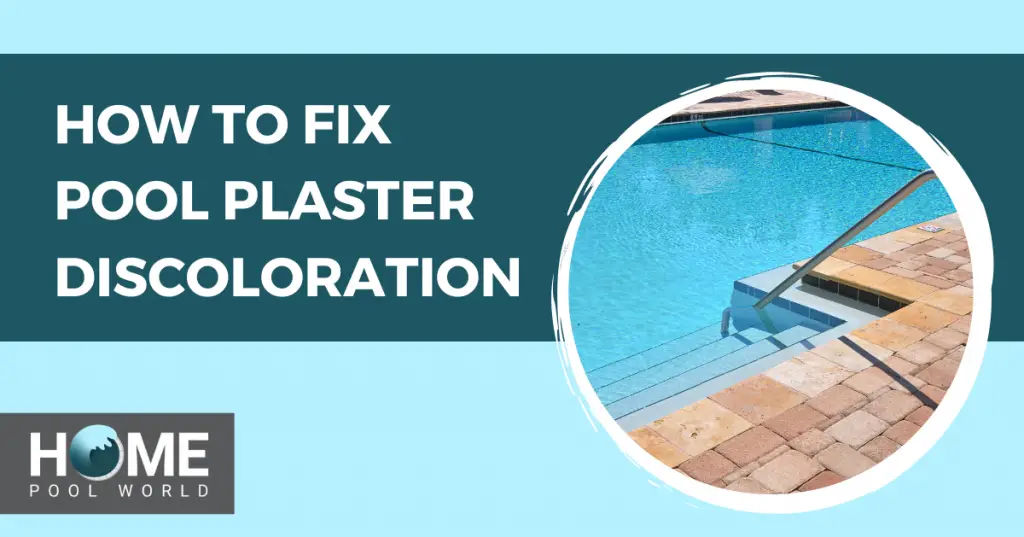If your pool plaster has seen better days, it may be time to consider repairs. Whether you’re dealing with cracks, stains, or chipped surfaces, there are various techniques you can employ to restore your pool’s pristine condition. This comprehensive guide will delve into the art of pool plaster repair, providing step-by-step instructions and expert advice to help you achieve a seamless finish.

Image: homepoolworld.com
Types of Pool Plaster Damage and Their Causes
Understanding the underlying causes of pool plaster damage is crucial for effective repairs. Common issues include:
Cracks: These can result from structural shifts in the pool shell, excessive water pressure, or improper plastering techniques.
Stains: Metallic objects, algae, and certain chemicals can cause discoloration or staining.
Chipped Surfaces: Rough handling, sharp objects, or inadequate bonding can result in chipped or missing plaster.
By identifying the root cause, you can tailor your repair approach to address the specific problem.
Essential Tools and Materials
Before embarking on repairs, gather the necessary tools and materials:
Diamond Grinder: Used for resurfacing and removing damaged plaster.
Mixing Bucket and Drill: For mixing plaster and other materials.
Trowel: For applying plaster and smoothing surfaces.
Grout Float: For finishing and compacting the plaster.
Sponge: For cleaning and shaping the plaster.
Step 1: Surface Preparation
Clean the pool thoroughly using a pressure washer to remove dirt and debris. Drain the pool and allow it to dry completely. Use a wire brush or acid wash to remove any scaling or algae buildup. If necessary, use a diamond grinder to remove chipped or damaged plaster. Create a rough surface with a diamond grinder to provide a better bond for the new plaster.

Image: www.pinterest.com
Step 2: Repair Cracks
For minor cracks, use a premixed epoxy crack repair kit. Inject the epoxy into the cracks using a caulking gun, ensuring it penetrates the entire depth. Allow the epoxy to cure according to the manufacturer’s instructions. For larger cracks, you may need to remove the damaged plaster around the crack and fill the void with new plaster.
Step 3: Treat Stains
To remove metallic stains, use a commercial metal stain remover. For organic stains caused by algae or other microorganisms, use a chlorine solution or algaecide. Apply the solution directly to the stain and scrub with a brush. Rinse thoroughly after treatment.
Step 4: Apply New Plaster
Mix the pool plaster according to the manufacturer’s instructions. Apply a thin layer of plaster to the prepared surface and spread it evenly with a trowel. Smooth the plaster using a grout float, working in small sections. Compact the plaster firmly to eliminate air pockets. Regularly moisten the plaster with a sponge to prevent cracking.
Step 5: Shaping and Finish
Use a damp sponge to shape the edges and corners of the pool. Smooth the plaster in a circular motion to remove any imperfections. Avoid overworking the plaster, as it can weaken its bond. Allow the plaster to cure for several hours before filling the pool with water.
Step 6: Acid Wash and Brush
After a week, acid wash the pool to etch the plaster and expose a smooth finish. Use a mild muriatic acid solution and follow the manufacturer’s instructions carefully. Rinse the pool thoroughly after the acid wash. Brush the plaster using a soft brush to remove any remaining debris or loose plaster.
How To Fix Pool Plaster
Conclusion
Repairing pool plaster requires attention to detail, proper preparation, and the use of quality materials. By following the steps outlined in this guide and observing the recommendations of experts, you can effectively restore your pool to its former glory. Remember to use appropriate safety gear and consult with a professional if you encounter any significant issues.